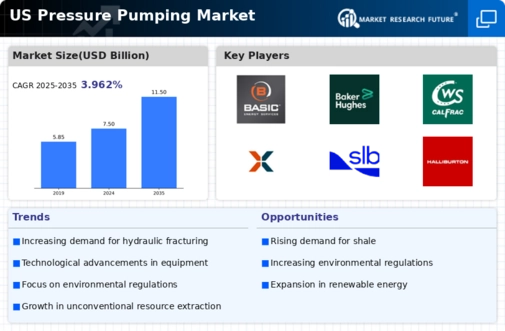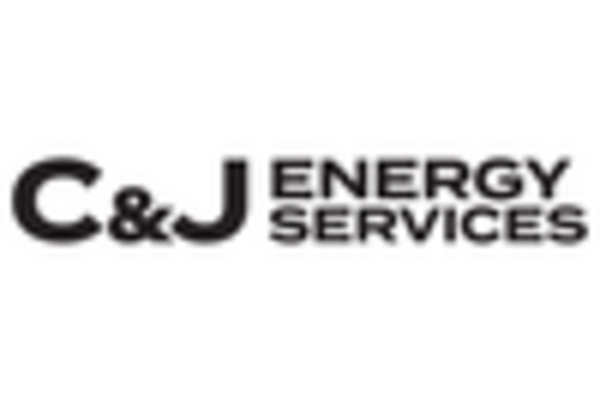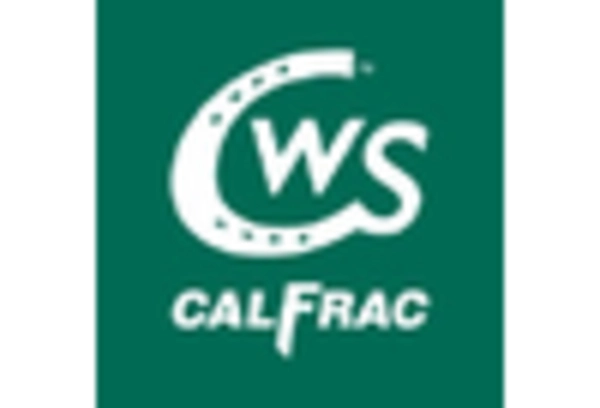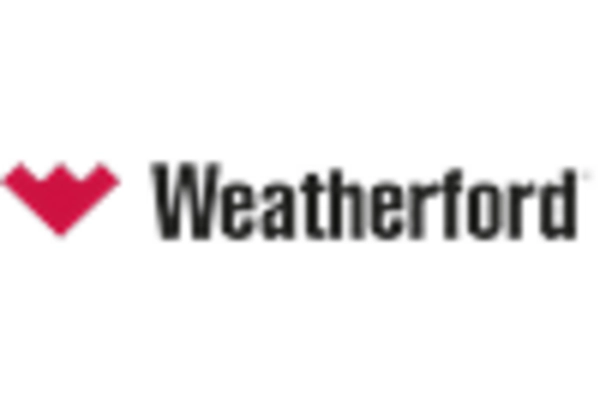Increased Demand for Energy
The pressure pumping market experiences heightened demand driven by the growing need for energy resources in the United States. As the country seeks to enhance its energy independence, the exploration and production of oil and natural gas have intensified. This trend is reflected in the increase in hydraulic fracturing activities, which utilize pressure pumping services. In 2025, the U.S. Energy Information Administration reported that domestic crude oil production reached approximately 12 million barrels per day, indicating a robust market for pressure pumping services. The pressure pumping market is thus positioned to benefit from this surge in energy demand, as operators require advanced pumping technologies to optimize extraction processes.
Rising Environmental Awareness
The pressure pumping market is increasingly influenced by rising environmental awareness among stakeholders. As public concern over environmental impacts grows, operators are compelled to adopt more sustainable practices. This shift is prompting the pressure pumping market to explore eco-friendly alternatives, such as waterless fracturing techniques and the use of biodegradable additives. Companies that prioritize environmental stewardship may gain a competitive edge, as consumers and investors favor responsible practices. The potential for reduced environmental footprints could lead to increased demand for innovative pressure pumping solutions that align with sustainability goals, thereby shaping the future of the industry.
Regulatory Support for Oil and Gas
The regulatory landscape in the United States plays a crucial role in shaping the pressure pumping market. Recent policies aimed at supporting domestic oil and gas production have created a favorable environment for pressure pumping services. The U.S. government has implemented measures to streamline permitting processes and reduce regulatory burdens, which encourages investment in hydraulic fracturing operations. As a result, the pressure pumping market is likely to see increased activity, with operators seeking efficient and compliant solutions to meet production targets. The potential for regulatory incentives further enhances the attractiveness of pressure pumping services, fostering growth in this sector.
Expansion of Unconventional Resources
The expansion of unconventional resources, such as shale gas and tight oil, is a significant driver for the pressure pumping market. The United States is home to vast reserves of these resources, which require advanced extraction techniques, including hydraulic fracturing. As exploration and production activities in these areas continue to grow, the pressure pumping market is poised for expansion. In 2025, it is estimated that unconventional resources will account for over 70% of total U.S. natural gas production, underscoring the critical role of pressure pumping services in facilitating this growth. The industry's ability to adapt to the unique challenges of unconventional resource extraction will be vital for its continued success.
Technological Innovations in Pumping Equipment
Technological advancements in pumping equipment are transforming the pressure pumping market. Innovations such as automated systems, real-time monitoring, and enhanced fluid management techniques are improving operational efficiency and safety. The integration of data analytics and artificial intelligence into pressure pumping operations allows for better decision-making and resource allocation. In 2025, the market for advanced pumping technologies is projected to grow by approximately 15%, reflecting the industry's commitment to adopting cutting-edge solutions. The pressure pumping market is thus evolving, as companies invest in modern equipment to enhance performance and reduce costs, ultimately driving market growth.

















Leave a Comment